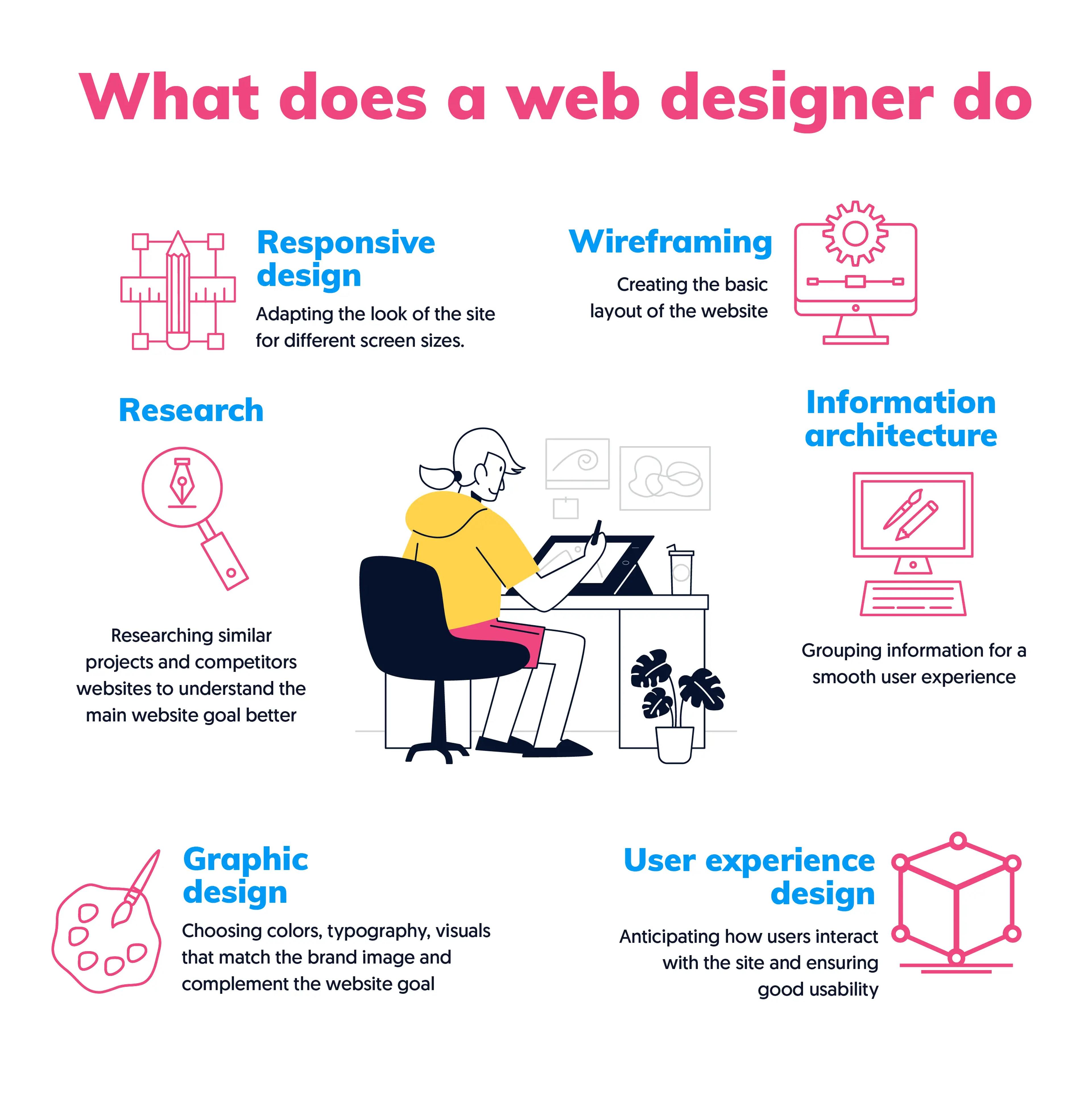Boost Your Business With Responsive and User-Friendly Web Layout
In an era where electronic communications dictate consumer behavior, the importance of responsive and user-friendly web design can not be overstated. A well-structured site not only fits various devices however also improves the total customer experience, fostering better involvement. Crucial element such as instinctive navigating and engaging visuals play an essential function in keeping visitors and driving conversions. As organizations significantly try online presence, recognizing the subtleties of efficient website design can be a video game changer. What techniques can you implement to guarantee your web site sticks out in this competitive landscape?
Significance of Responsive Layout
In today's digital landscape, a substantial majority of internet traffic stems from mobile phones, emphasizing the crucial relevance of responsive style. As users progressively accessibility sites via smartphones and tablet computers, businesses should make certain that their online existence is maximized for various display dimensions and resolutions. las vegas web design. Responsive style not just boosts user experience however additionally plays a vital function in seo (SEARCH ENGINE OPTIMIZATION), as search engines focus on mobile-friendly websites

In addition to boosting customer fulfillment, responsive design can provide an affordable advantage. In an industry where electronic interactions are vital, services that prioritize receptive website design setting themselves as forward-thinking, boosting their brand name credibility and inevitably driving conversions.

Trick Elements of User-Friendly Design
Creating an easy to use style includes a number of crucial elements that improve functionality and make sure a favorable communication with the web site. Simplicity is essential; a tidy, clean design allows users to browse easily. User-friendly navigating is another vital component, making it possible for customers to discover information quickly without complication. This can be attained through clear menus, sensible structuring, and regular placement of navigation buttons.
In addition, clear typography plays a substantial function in customer experience. Choosing understandable typefaces and suitable dimensions guarantees that users can quickly eat content without straining their eyes. Reliable usage of color and comparison not only enhances aesthetics yet also enhances readability and ease of access for customers with aesthetic impairments.
Furthermore, including interactive components such as buttons and links that are clearly specified and appropriately spaced encourages individual involvement. Feedback systems, like hover impacts or confirmation messages, even more boost the communication by providing customers with reassurance that their actions have actually been identified.
Lastly, optimizing load times can significantly affect customer contentment. A fast-loading web site reduces bounce prices and keeps individuals involved, eventually promoting a much more beneficial perception of the brand name. By focusing on these aspects, businesses can develop a straightforward style that drives success.
Advantages of Mobile Optimization
Mobile optimization is important for modern web sites, as individuals increasingly count on their mobile phones and tablets for searching. Individuals can conveniently navigate a mobile-optimized site, which enhances their general experience and raises the likelihood of interaction.
Furthermore, mobile optimization can result in higher search engine positions. Internet search engine like Google focus on mobile-friendly internet sites in their algorithms, implying that organizations with maximized sites are a lot more most likely to appear in search results page. This exposure can drive a lot more natural web traffic and possible consumers to business.
In addition, mobile optimization lowers bounce rates. When customers encounter a web site that is hard to navigate or reduce to pack on their mobile phones, they are most likely to leave and look for choices. By offering a smooth experience, organizations can keep individuals and convert check outs into sales.
Enhancing User Experience
A well-optimized internet site not only satisfies mobile customers but likewise substantially boosts total customer experience. By integrating receptive design concepts, organizations can ensure that their sites come throughout numerous tools and display dimensions, developing a seamless browsing experience. This flexibility cultivates user interaction, as site visitors are much less most likely to run into irritating navigating concerns or altered material.
In addition, an user-friendly interface streamlines communications, permitting customers to find info or total transactions effortlessly. Components such as intuitive food selections, clear calls-to-action, and aesthetically appealing layouts add to a favorable experience, motivating individuals to spend more time on the website. Quick packing times are another vital facet, as sluggish sites continue reading this can bring about high bounce rates and dissatisfied consumers.
Additionally, improving user experience entails taking into consideration the needs of diverse target markets. Carrying out functions such as alt message for photos and making sure high comparison between message and background can make websites much more easily accessible to people with handicaps. Inevitably, prioritizing customer experience not just satisfies go to website existing clients but likewise draws in new ones, establishing a solid foundation for service development in a progressively electronic landscape.
Measuring Success and ROI
Determining success and return on investment (ROI) in receptive website design is crucial for comprehending its influence on organization efficiency (las vegas web design). To efficiently determine the success of a responsive internet layout initiative, services need to establish vital performance indications (KPIs) that align with their purposes. Common KPIs consist of conversion prices, bounce prices, user involvement metrics, and typical session durations
Tracking these metrics with analytics tools allows services to examine how well the receptive layout satisfies user requirements throughout tools. A high conversion price, for example, suggests that individuals are not only visiting the website however are additionally taking wanted activities, such as purchasing or enrolling in a newsletter.
Companies ought to also consider qualitative responses from customers, as this can supply insights into user contentment and locations for enhancement. By constantly measuring success and ROI, firms can make enlightened decisions to enhance their internet existence, guaranteeing that their responsive layout methods produce optimal outcomes and foster long-lasting growth.
Verdict
